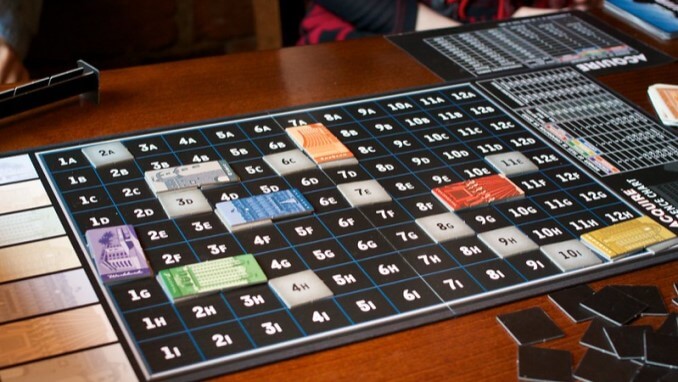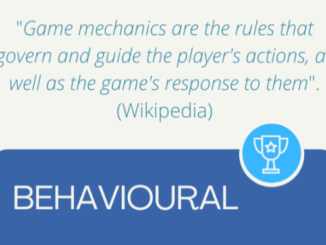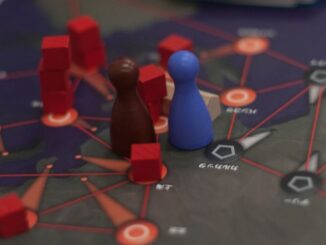
If Acquire is a better economics teacher than Monopoly, what can it teach learning game designers?
I have often come across the idea that Monopoly can teach people about economics. If you want to teach the lesson the original creator intended—that gaining vast wealth at the expense of others is problematic—then you could argue that Monopoly does it well. But that’s more a philosophical position than a set of skills.
What many people mean when they say ‘teach economics’ is ‘teach people the skills to operate well in an economic system’. And this, Monopoly is not very good at. For a game to build skills that are useful in a real-life system, it needs to do two things:
- Give meaningful choices, where good decisions tend to good outcomes, to build the ability to make good decisions in the context
- Provide a reasonable analogue to key elements of the real-life system where these skills are to be used
In Monopoly, you mainly choose to buy or not buy the properties you land on by the roll of the dice, which is neither a very meaningful choice nor very representative of real-life. Luck is part of real life economics, but our choices are rarely so constrained. A game that does a better job (although not specifically intended as a learning game) is Acquire.
In Acquire, players draw tiles, much as in Scrabble, and keep them on their own rack, choosing one to play on their turn. Instead of letters, each tile represents one square on the gameboard. The gameboard is simply a grid of empty squares, each marked with a number for the column and a letter for the row. So I have the tile ‘1-A’, I can place it in the top-left square, marked ‘1-A’.
As the board starts to fill with tiles, sooner or later a player will place a tile next to another. When they do this, they form a hotel chain—they can choose from seven named chains, some cheaper, some more expensive. The player gets one free stock in the chain, represented by a card. From that point on, at the end of a turn, players can buy up to three stocks from any hotel chain on the board.
If two hotel chains sit next to each other, a player could place a tile that links them together. When that happens, the smaller merges into the larger, shares in the now-defunct smaller chain earn a choice of compensation, and the biggest stockholders in the smaller chain get bonuses.
Why does this make for a good economics teacher? What should learning game designers do to emulate it (rather than Monopoly) if they want their game to build skills for real-life situations or challenges, whether economic or any other?
Present interesting choices that represent real-life choices
In Acquire, when you hold stocks in a chain that merges into another, you have three options—sell them, trade two-for-one for stocks of the bigger chain, or keep them in the hope that the merged chain will re-form anew. This can be a tough choice.
Maybe the two-for-one deal right now is a net loss, but it makes you into the majority stock owner in the larger chain, which could rise in value. Kept stocks lose the opportunity to profit now, but if the chain reforms, you’ll have a head start towards a majority holding. Selling the shares might let you buy some expensive and valuable shares you otherwise couldn’t afford.
Players are forced to balance short-term with long-term gains, to consider probabilities of various outcomes, and to calculate expected returns—all key skills for real-life economic systems. Learning game designers should look to build in choices that are not clear, and force the kind of problem-solving and decision-making that we want learners to take from the game into real life.
Allow players to determine priorities and goals

There are many things you could prioritise in Acquire. If you own a lot of stock, or a majority holding, in a chain, you may want to prioritise increasing its size. If you need ready cash, you may want to prioritise merging it into another chain. When buying stocks, you might choose to prioritise getting a majority stake in a chain, or you might look to spread your investments so that you profit from activity in many chains.
This goes beyond immediate choices—it’s not just ‘how do I achieve my goals?’, it’s ‘what even are my goals?’. Although there is a single win condition—be richest at game end—there are many paths and sub-goals. Again, this is reflective of the real-life system we’re considering here.
Learning game designers should look to give players control over the route they take and the sub-goals—or even the ultimate goals—they set. To go back to Monopoly, the only real choice of goal is which set to collect, but that’s strictly limited by which you land on. Acquire’s freer choice is more meaningful and skill-building for the player, and more reflective of real life. If games give this freedom in a way that mirrors a real-life situation, players can build skills to navigate that situation.
Build real-life considerations into game decisions
To help players learn to invest wisely, a game needs to make players consider risk versus reward. Monopoly’s risk versus reward consideration is mainly a simple one around the risk of buying/not buying a property, once you land on it. You can’t choose to take the risk of landing on another player’s hotel in hopes of a big reward, or assess the expected return on turning a chance card before deciding whether to turn it.
Acquire asks players to consider risk and reward in many ways. Should you start a new chain now, to get the free share, and risk having to split your buying between the new chain and an existing one you’re already competing for a majority stock holding in? Should you merge two chains now while you know you’re a majority stockholder, or take a risk and allow them to grow first, even though somebody else may overtake you?
Risk versus reward is a key factor in many good games, so game designers should consider the risk and reward in players’ decisions for any game. But here, it’s a key skill for the real-life situation in question. Learning game designers should look at the skills they’re trying to build in players, and ask: how can I make this a consideration in the decisions and actions that make up my game?
Set variables carefully to represent real-life challenges
In Acquire, there are 25 available stocks in each chain. Players get one stock for starting a chain, and can buy—if they have funds—three stocks each turn. These numbers are not accidental or random. 25 is an odd number, meaning that 13 stocks guarantees a majority holding. This can be achieved with the free stock for starting, plus four turns of buying only that stock (with your three permitted purchases per turn) and nothing else. So whoever starts the chain, can get majority holding if they can afford it and focus all their efforts on doing so.
But what if you have two races on at once? You may have to choose. Or, what if you’re a turn away from getting that majority, and somebody merges another chain into the chain, and trades in some stock in the acquired chain to overtake you? All these concerns, and the specific numbers that facilitate them, represent very well a simplified model of the dynamics and challenges of scarcity.
Set the stocks at 26 per chain, or allow players to buy as many stocks as they like per turn, and the dynamics change, as do the lessons and the skills. Learning game designers should consider and play with the variables in their games, with an eye to the challenges they put to the players, and the skills they build as a result.
Few elements, many possibilities
What Acquire doesn’t do is model real-life economic scenarios by including many complex elements that bring the intricacies of real-life stock trading and the hotel business into the game. The rules and components are fairly simple. I explained the core of the game in three paragraphs above, and the components are simply the grid board, the tiles, the 25 stock cards for each of the seven chains, and a reference card showing the costs and values of each chain. That’s it.
But from the interrelations of those elements emerges a set of complex—but not over-complicated—possibilities. The simple rules about how chains grow and merge give rise to options and possibilities around growing your chain or merging it into another. The way stocks are bought and majority bonuses are given gives rise to scarcity and tactical competition for control.
By limiting the number of elements, but making each interrelate to others in a number of carefully thought-out ways, Acquire models many important decisions and skill-building moments from real life, without confusing players or muddying the lessons. Learning game designers should resist the urge to represent real life by including every little element and agent separately, and try to represent them in spirit, simply, but in a way that brings into the game the important decisions or considerations.
Terry’s innovative learning design tool, The Transform Deck is available to buy from his shop.
- Using Games to Sculpt Agency - 22nd November 2022
- Gift Horse Download - 25th April 2022
- Dungeons & Dragons & Development - 21st April 2022




